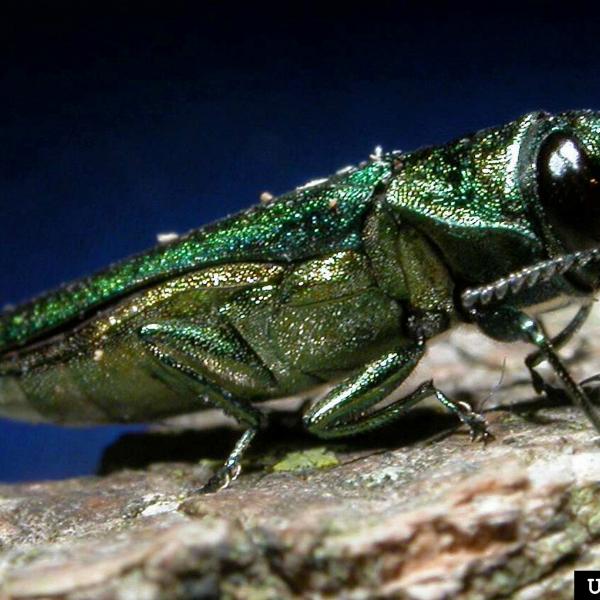
The Emerald ash borer (EAB), is native to a very large geographic area of East Asia that includes northeast China, Korea, Japan, Taiwan, Mongolia and the Russian Far East. In its home range EAB is a minor, not particularly common secondary pest that attacks stressed trees of the local species of ash, predominately Chinese and Manchurian ash. Before 2002, EAB had never been found outside of its native range. Everything changed around 1990. The Emerald ash borer became a world traveler. The once innocuous, now invasive pest would soon claim the title as the most destructive forest pest in North America. EAB was identified in Michigan and southern Ontario in 2002. Experts estimated that the insect arrived 10 or 12 years earlier, probably in wood packing material from China. While all species of North American ash are hosts for EAB, mortality is most severe on white, green and brown ash. Tens of millions of ash trees in North America have died with no end in sight at this point.
The only other known infestation of EAB in the world is in the Moscow region of Russia. In 2007 EAB was identified as the culprit responsible for attacking and killing green ash in large numbers in Parks, along streets and in shelterbelts within the city of Moscow. Green ash is not native to the region but is widely planted as an ornamental and landscaping tree. It isn’t known how EAB arrived in Moscow. It may have been introduced on infested planting stock or wood packing material from China. EAB has spread to encompass and area of 58,000 square miles around Moscow. At a rate of spread of 25 miles per year, much faster than its natural dispersal rate, it is suspected that EAB is being moved via hitch-hiking of adult beetles on vehicles. The insect is now established in broadleaved woodlands and poses a major threat to ash trees in Europe as there is no geographic barrier to prevent spread westward into other European countries. Studies suggest that EAB will arrive in Britain in 15 to 20 years. The UK has put regulations in place to minimize the risk of accidental introduction in trade and transport and tree health experts are developing a contingency plan in case there is an EAB outbreak in Britain.
Where in the world will EAB travel to next? There are plenty of broadleaf forests in the world where ash can be found. On the positive side, much has been learned about EAB in the past 12 years that will improve management of the pest, and there are strict international transport regulations in place that should reduce the risk of accidental introduction. Countries that have ash as a major resource are likely already on the lookout for EAB.
By Jay Lackey, Forest Protection Specialist, VT Department of Forests, Parks and Recreation